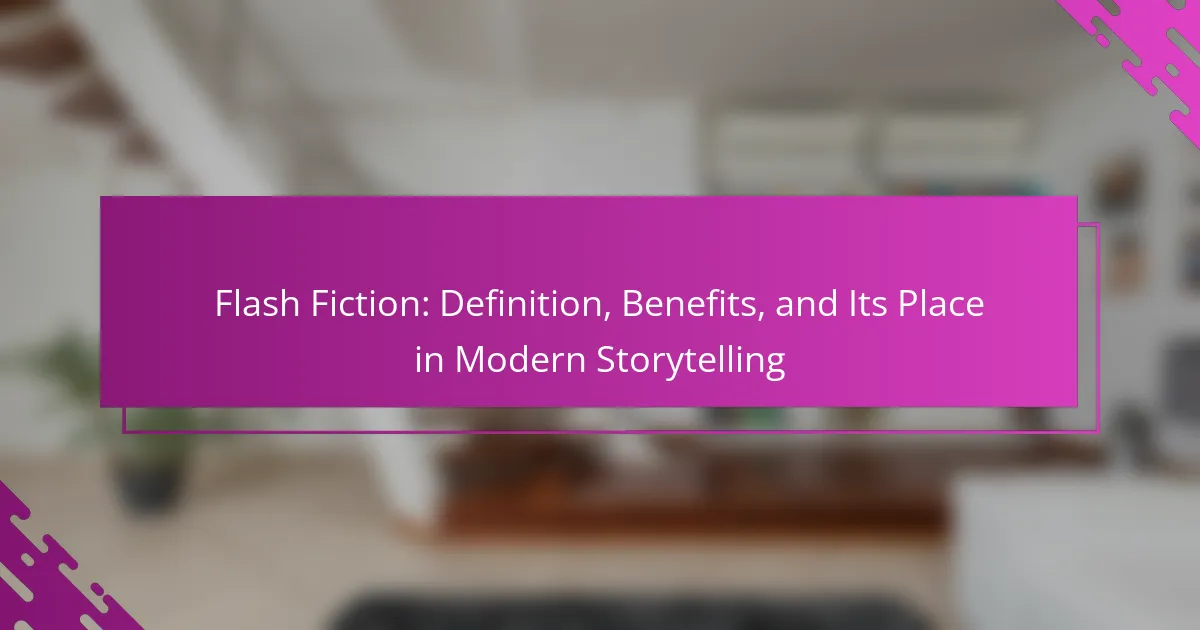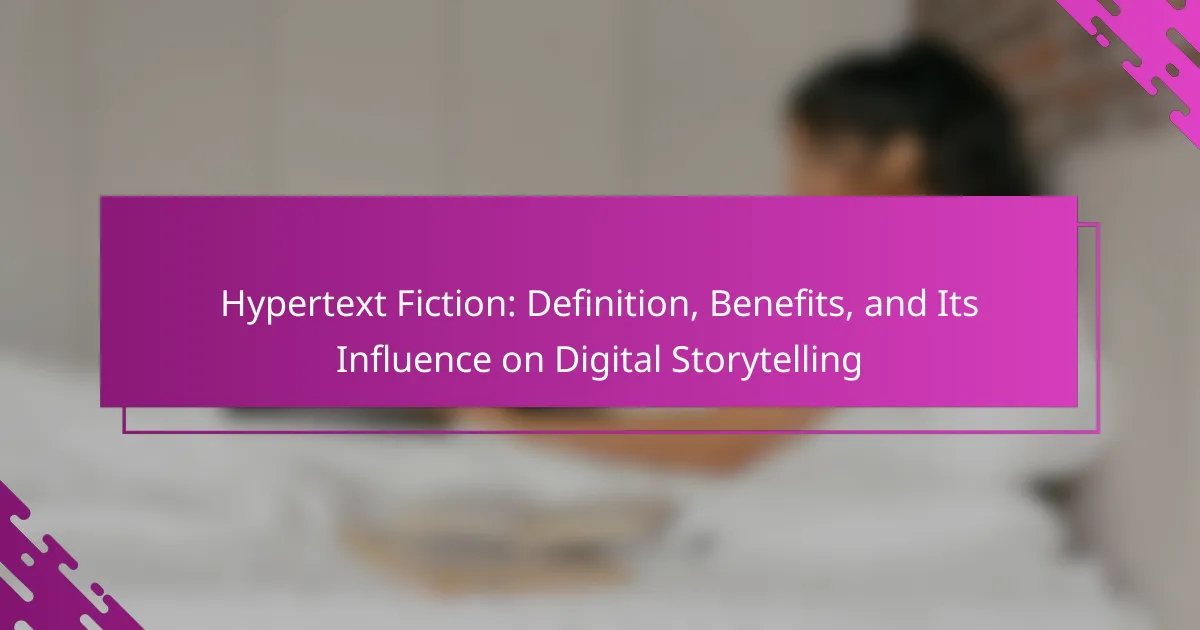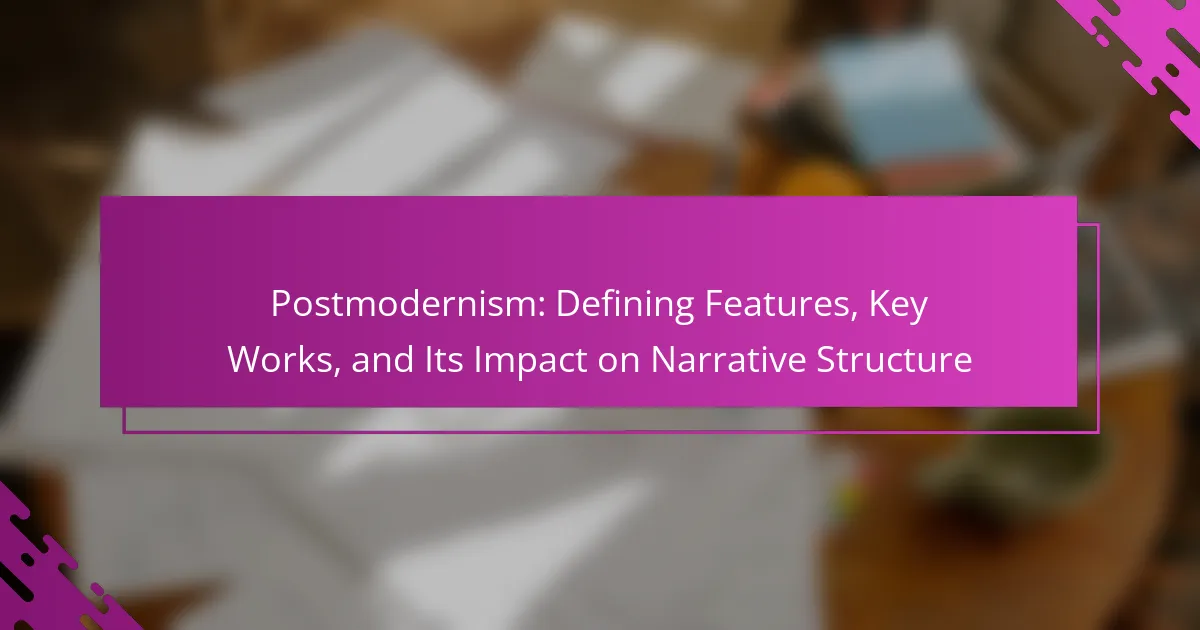Metafiction challenges readers to engage critically with narratives by blurring the lines between fiction and reality. It employs techniques like self-reference, breaking the fourth wall, and narrative playfulness. This article explores the role of metafiction in contemporary literature, notable authors contributing to the genre, and the cultural implications across different regions. Additionally, it addresses the challenges writers face in crafting metafictional works.
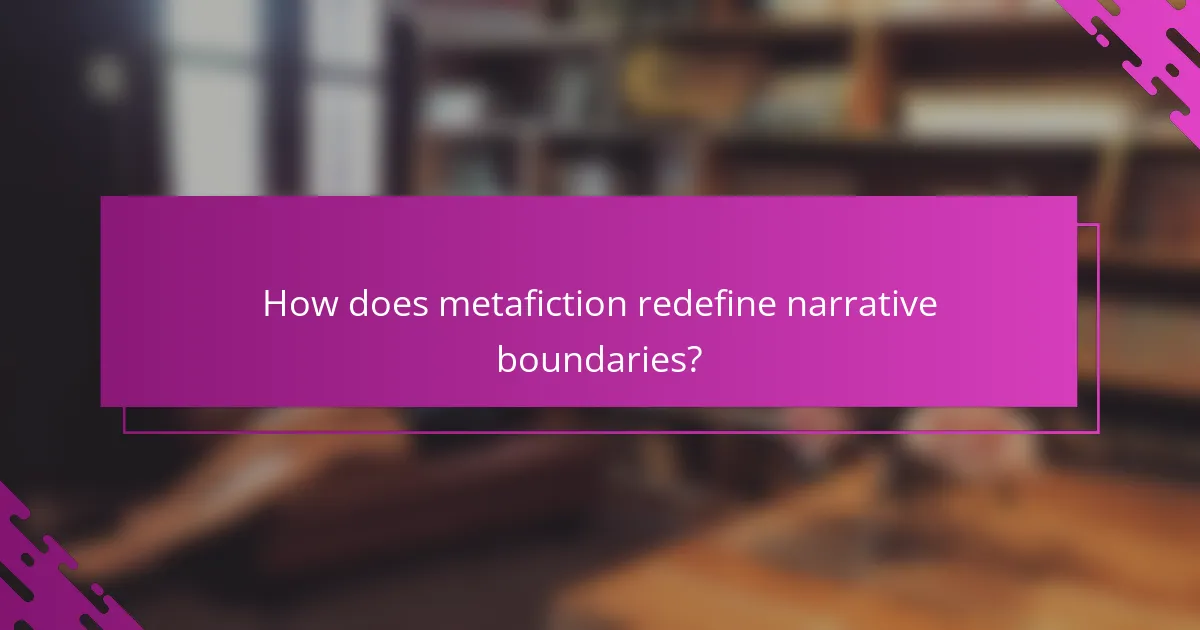
How does metafiction redefine narrative boundaries?
Metafiction redefines narrative boundaries by blurring the line between fiction and reality, inviting readers to question the nature of storytelling. It employs techniques such as self-reference, where the text acknowledges its own fictional status, and playfulness with form, disrupting traditional narrative structures. This approach encourages critical engagement, making readers aware of the constructed nature of narratives. As a result, metafiction not only expands the possibilities of storytelling but also challenges the conventions that shape our understanding of literature.
What are the key characteristics of metafiction?
Metafiction is characterized by self-referentiality, narrative awareness, and the blending of fiction and reality. It often challenges traditional storytelling by highlighting its own constructed nature. Key techniques include breaking the fourth wall, authorial intrusion, and non-linear narratives. These elements serve to engage readers in questioning the nature of fiction itself, making metafiction a significant aspect of contemporary literature.
Why is self-reflexivity important in metafiction?
Self-reflexivity is crucial in metafiction as it allows authors to explore the nature of storytelling itself. This technique invites readers to question the boundaries between fiction and reality. By highlighting its own narrative structure, metafiction fosters a deeper engagement with the text. It encourages critical thinking about the role of the author, the reader, and the conventions of literature. This unique attribute enhances the reading experience, transforming passive consumption into active interpretation.
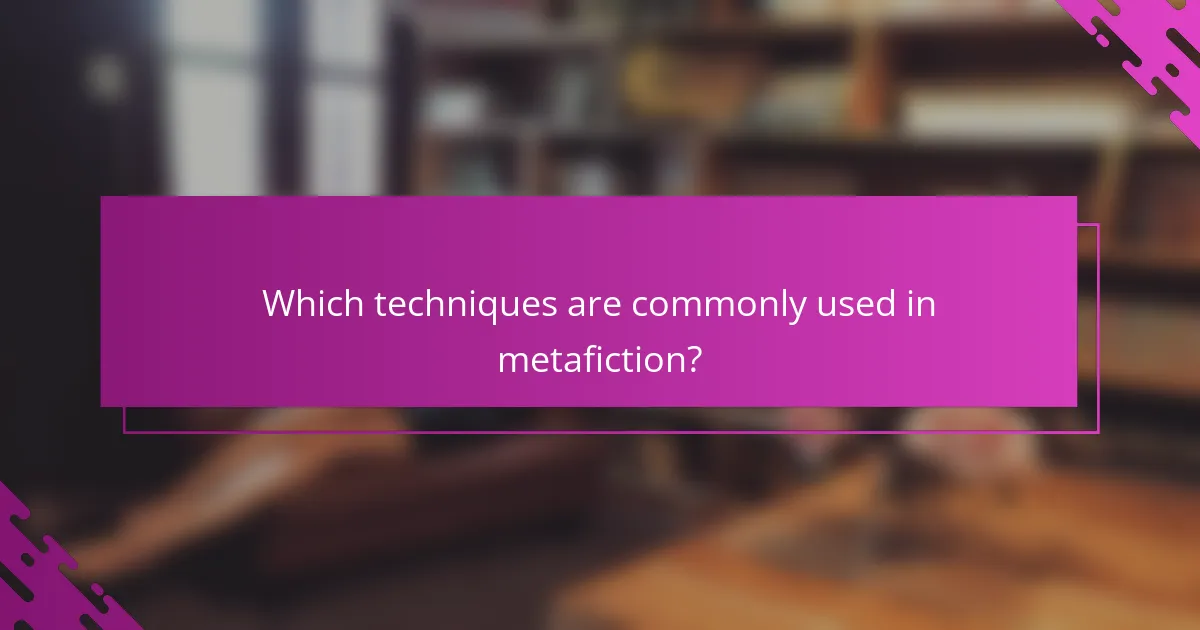
Which techniques are commonly used in metafiction?
Metafiction employs techniques like self-reference, breaking the fourth wall, and narrative playfulness. These methods challenge traditional storytelling by drawing attention to the artifice of fiction itself.
Common techniques include:
1. Self-Referential Narration: The narrative acknowledges its own fictional nature.
2. Intertextuality: References to other texts enhance meaning and create connections.
3. Fragmentation: Non-linear storytelling disrupts conventional narrative flow.
4. Authorial Intrusion: The author directly addresses the reader, blurring boundaries.
5. Parody and Satire: These techniques critique literary conventions and genres.
6. Unreliable Narrators: Characters whose credibility is questionable create ambiguity.
These techniques contribute to metafiction’s unique role in contemporary literature by encouraging readers to reflect on the nature of storytelling.
How do unreliable narrators enhance metafictional works?
Unreliable narrators enhance metafictional works by creating layers of ambiguity and questioning the nature of truth. These narrators challenge readers’ perceptions, forcing them to engage critically with the text. This technique often reflects the complexities of storytelling and reality, making the reader aware of the constructed nature of narratives. Such engagement can lead to a deeper understanding of character motivations and themes, enriching the overall reading experience. By destabilizing the narrative, unreliable narrators invite exploration of subjective truths, contributing to the metafictional discourse in contemporary literature.
What role does intertextuality play in metafiction?
Intertextuality plays a crucial role in metafiction by creating layers of meaning through references to other texts. This technique allows authors to challenge traditional narrative forms and engage readers in a dialogue about literature itself. By incorporating elements from various works, metafictional texts highlight the constructed nature of storytelling. This self-referential approach encourages critical thinking and invites readers to consider the relationship between fiction and reality.
How is metafiction utilized in contemporary digital literature?
Metafiction in contemporary digital literature often serves to blur the boundaries between fiction and reality. It utilizes self-referential techniques, allowing authors to comment on the nature of storytelling itself. This approach invites readers to engage more deeply, questioning narrative structures and their own role in the reading experience. Digital platforms enhance metafiction’s impact through interactive elements, enabling a unique exploration of narrative layers. Such techniques challenge traditional storytelling, making readers active participants rather than passive consumers.
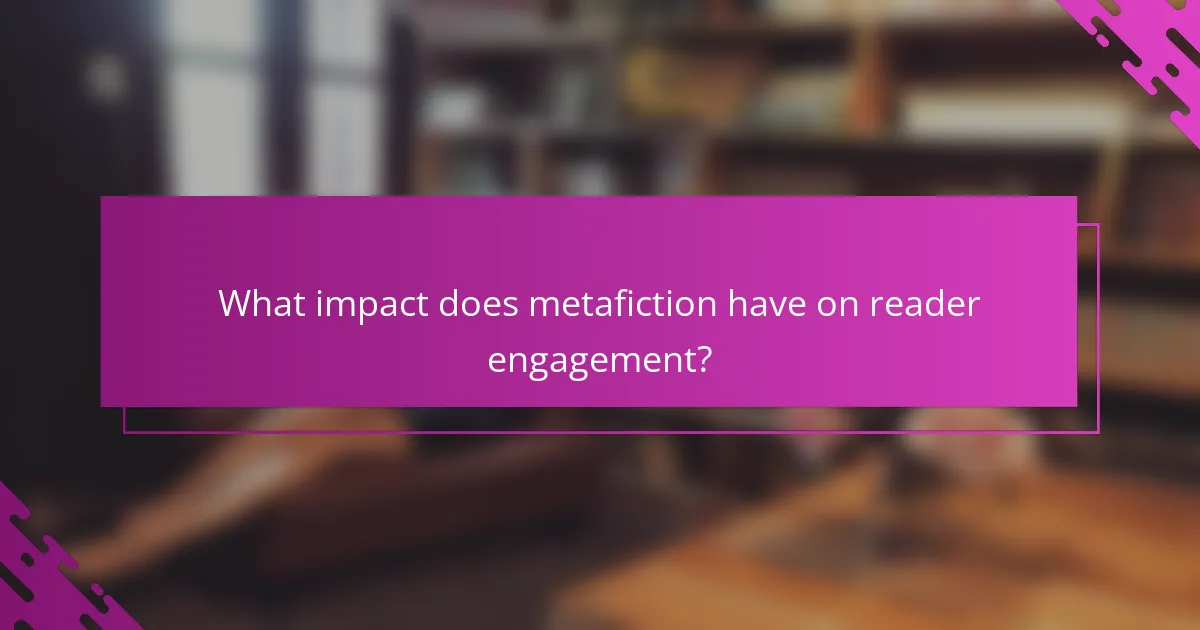
What impact does metafiction have on reader engagement?
Metafiction significantly enhances reader engagement by inviting active participation and self-reflection. This literary technique breaks the fourth wall, prompting readers to question the nature of storytelling and their role within it. Through self-referential narratives, metafiction creates a layered reading experience that challenges conventional boundaries. As a result, readers often feel more invested in the text, leading to deeper emotional and intellectual connections.
How does metafiction challenge traditional storytelling?
Metafiction challenges traditional storytelling by self-referentially examining its own narrative structures. This technique disrupts reader expectations, blurring the line between fiction and reality. By highlighting the artifice of storytelling, metafiction invites readers to question the nature of truth in literature. As a result, it fosters a deeper engagement with the text, encouraging critical thinking about narrative conventions and the role of the author.
Why do readers gravitate towards metafictional narratives?
Readers gravitate towards metafictional narratives because they challenge conventional storytelling, inviting self-reflection and critical engagement. These narratives blur the line between fiction and reality, creating a unique reading experience. Metafiction often employs techniques like unreliable narrators and direct addresses to the audience, enhancing reader involvement. This interaction fosters a deeper understanding of the narrative structure and the nature of storytelling itself. As a result, metafiction resonates with contemporary audiences seeking innovative literary forms that provoke thought and discussion.
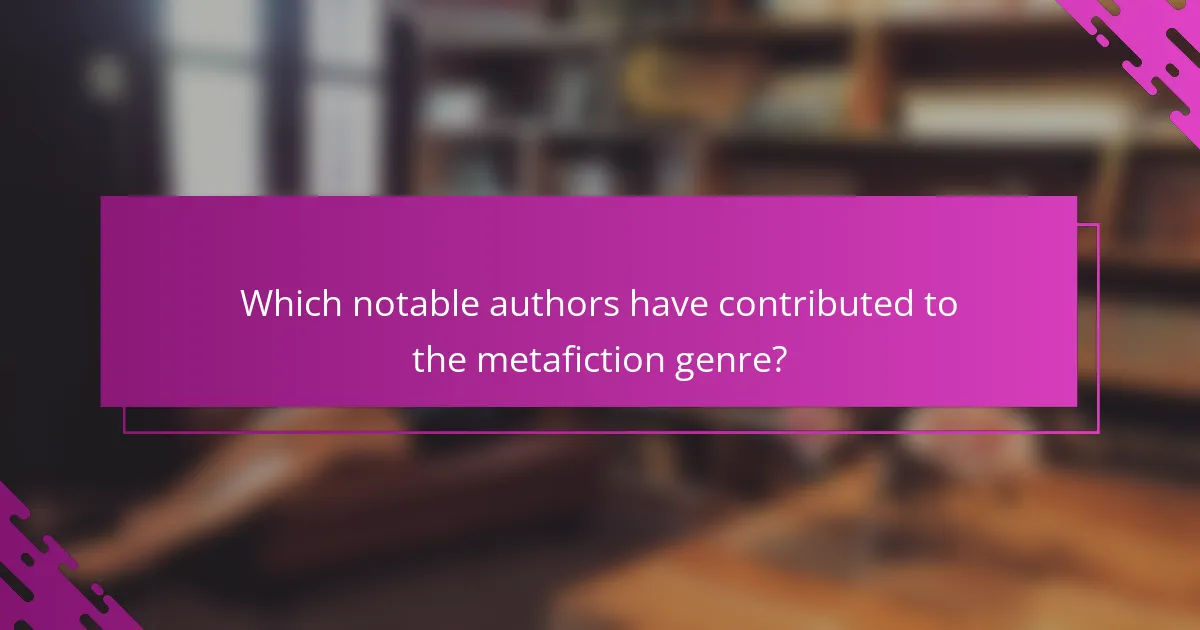
Which notable authors have contributed to the metafiction genre?
Notable authors who have contributed to the metafiction genre include Jorge Luis Borges, Italo Calvino, and Thomas Pynchon. These writers explore the nature of fiction through self-referential techniques and narrative complexity. Borges is known for his intricate stories that blur the line between reality and fiction. Calvino’s works often play with narrative structure, while Pynchon’s novels are characterized by their dense, multilayered storytelling. Other significant contributors include David Foster Wallace and Mark Z. Danielewski, who further push the boundaries of narrative form in contemporary literature.
What unique perspectives do authors like Jorge Luis Borges bring to metafiction?
Authors like Jorge Luis Borges bring unique perspectives to metafiction by blurring the lines between reality and fiction. Borges employs intricate narrative structures and self-referential techniques that challenge readers’ perceptions of authorship and storytelling. His works often explore themes of infinity and the nature of existence, inviting readers to question the boundaries of literary reality. This approach enhances the metafictional experience, making readers aware of their role in interpreting the text. Borges’ distinctive style and philosophical depth position him as a pivotal figure in contemporary metafiction.
How does the work of Italo Calvino exemplify metafictional techniques?
Italo Calvino’s work exemplifies metafictional techniques through self-referential narratives that challenge traditional storytelling. His novels often blur the line between fiction and reality, inviting readers to question the nature of narrative itself. For example, “If on a winter’s night a traveler” employs a second-person perspective, directly addressing the reader and creating a unique reading experience. This technique emphasizes the act of reading as a central theme, making the reader aware of their role in constructing meaning. Calvino’s use of fragmented narratives and intertextuality further reinforces metafiction’s role in contemporary literature, showcasing how fiction can reflect on its own structure and purpose.
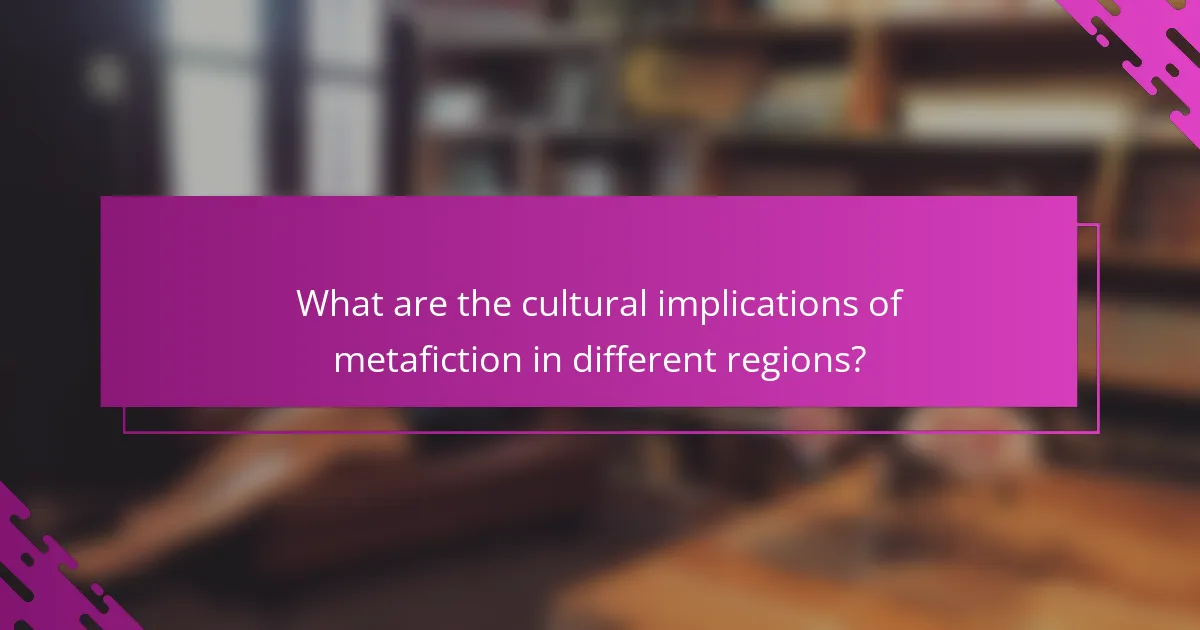
What are the cultural implications of metafiction in different regions?
Metafiction presents varied cultural implications across regions, reflecting local literary traditions and societal values. In Western literature, metafiction often critiques narrative conventions, promoting self-awareness in storytelling. In contrast, Eastern metafiction may incorporate philosophical elements, emphasizing the interconnectedness of reality and fiction.
Latin American metafiction frequently blends magical realism with self-referential techniques, showcasing cultural identity and history. African metafiction may address post-colonial themes, using narrative to explore cultural heritage and political issues. Each region employs metafiction to engage with its unique cultural context, allowing for diverse interpretations and resonances in contemporary literature.
How is metafiction perceived in contemporary French literature?
Metafiction is perceived as a significant and innovative approach in contemporary French literature. It challenges traditional narrative forms by self-consciously exploring the boundaries of fiction and reality. This genre often employs techniques such as unreliable narrators and intertextuality to engage readers in a deeper reflection on the act of storytelling. Notable authors like Georges Perec and Michel Houellebecq utilize metafiction to critique societal norms and question the nature of literary creation. As a result, metafictional works have gained prominence for their ability to provoke thought and redefine literary expectations in modern French literature.
What trends in Spanish literature reflect metafictional themes?
Recent trends in Spanish literature prominently feature metafictional themes, emphasizing self-reflexivity and narrative complexity. Authors like Javier Marías and Rosa Montero explore the boundaries between fiction and reality. This trend showcases how stories can comment on their own construction, engaging readers in a dialogue about the nature of storytelling. Moreover, the rise of digital platforms has influenced this trend, allowing for innovative narrative techniques that blur traditional genre lines. These metafictional elements invite readers to question the authenticity of narratives, reflecting contemporary societal concerns.
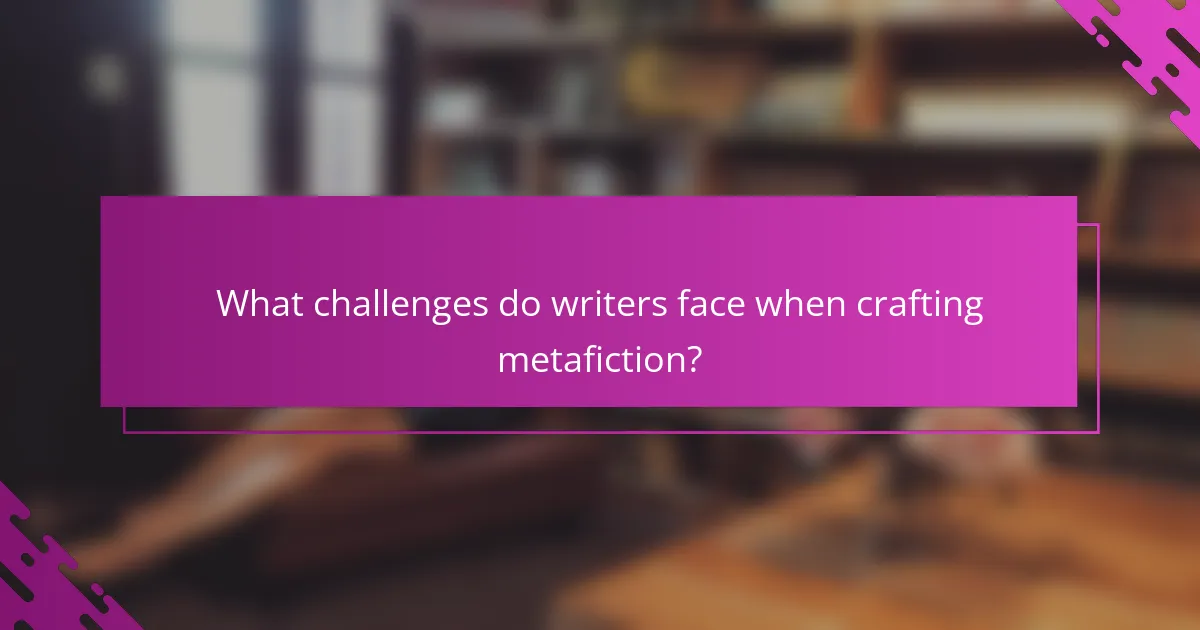
What challenges do writers face when crafting metafiction?
Writers face several challenges when crafting metafiction, including balancing narrative layers and maintaining reader engagement. The complexity of self-referential storytelling can confuse readers, making clarity essential. Additionally, writers must navigate the risk of alienating audiences unfamiliar with metafictional techniques. Emotional depth is often sacrificed for intellectual exploration, which can hinder character development. Finally, the genre’s tendency to critique literary conventions may limit its mainstream appeal.
How can authors balance complexity with accessibility in metafiction?
Authors can balance complexity with accessibility in metafiction by employing clear narrative structures and relatable themes. Utilizing techniques such as intertextuality and self-reflexivity can engage readers while maintaining clarity. Simplifying language and providing context for complex ideas ensures broader understanding. Additionally, incorporating humor or familiar cultural references can make intricate concepts more approachable, enhancing reader engagement without sacrificing depth.
What common pitfalls should writers avoid in metafiction?
Writers should avoid excessive self-reference, confusing narrative structures, and neglecting character development in metafiction. These pitfalls can alienate readers and undermine the story’s emotional impact. Maintaining a balance between metafictional techniques and engaging storytelling is crucial for effective communication.
What best practices can enhance the effectiveness of metafiction?
Utilizing specific techniques can significantly enhance the effectiveness of metafiction. Focus on self-reflexivity to create awareness of the narrative’s construction. Employ intertextuality to connect with existing literary works, enriching the reader’s experience. Use unreliable narrators to challenge perceptions and provoke thought. Incorporating fragmented narratives can engage readers by reflecting the complexities of reality. Lastly, balance humor and seriousness to maintain reader interest while exploring deeper themes.
